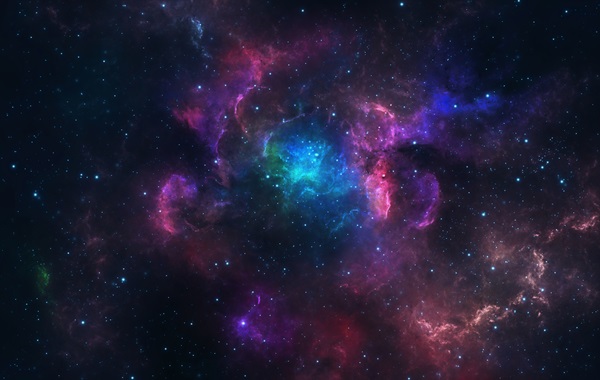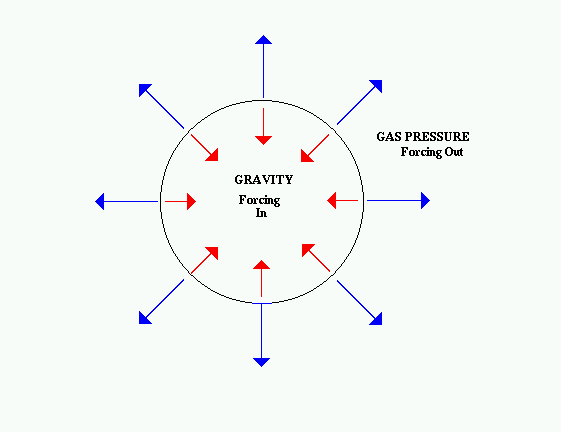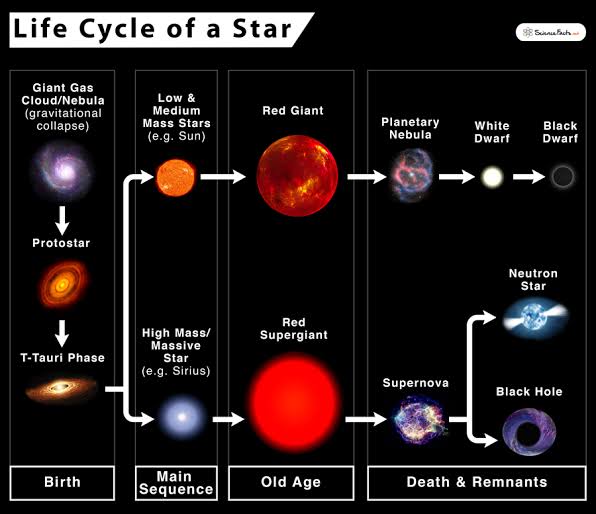Life Cycle of Star : Online Physics Class
The life cycle of the Star/Sun starts from nebulae (consisting of gas and dust). All stars start from a cluster of gas and dust but as gravity pulls all the gas and dust, a protostar will start to form.
Protostar
- The stage where clusters of gas and dust gather and pull together.
- Temperature increases as gravity pulls gas and dust towards the centre
The star is held together by two important forces.(Equilibrium Stars)
- Gravitational force: Gravity pulls the mass of the star inward, trying to collapse it under its weight.
- Pressure force: Generated by nuclear fusion reactions occurring in the core, this force pushes outward, opposing gravitational collapse. The pressure is a result of the high temperature and density in the core, where nuclear fusion occurs, creating energy that counteracts gravitational collapse.
Main Sequence of STAR
- This is the stage where the sun is formed and starts to burn.
- The nuclear reaction will be fueled by only hydrogen.
- Two light nuclei of Hydrogen will form heavier atoms (Helium). The equation can be demonstrated below.
Red Giant and Super Red Giant
The end of life for the Star will happen when Hydrogen is completely burnt. The star will expand in size and turn red. This occurs because the Hydrogen in the core starts to deplete. The core starts to collapse and the temperature increases. The outer shells begin to burn and expand in size.
White Dwarf
The core which is left behind will collapse completely, due to the pull of gravity, and the star will become a white dwarf
Life Cycle of Star
- Formation: Stars begin their lives within vast clouds of gas and dust called nebulae. Gravitational forces cause these clouds to condense and form a protostar—a hot, dense core surrounded by a rotating disk of gas and dust.
- Main Sequence: For most of its life, a star exists in the main sequence phase, where it fuses hydrogen into helium in its core. This process generates energy, causing the star to emit light and heat. The duration of this phase depends on the star’s mass; larger stars have shorter main sequence lives compared to smaller ones.
- Red Giant or Supergiant Phase: As the hydrogen in the core begins to deplete, the star changes. In the case of smaller stars like our Sun, it expands into a red giant. Larger stars might become supergiants. During this phase, the outer layers of the star expand and cool while the core contracts and heats up.
- Helium Burning: In the core of massive stars, when the core’s temperature reaches a critical point, helium fusion begins, forming heavier elements like carbon and oxygen. This stage occurs at different times for stars of varying masses.
- Supernova: Massive stars eventually exhaust their nuclear fuel. When the core collapses, it can trigger a supernova explosion, expelling most of the star’s material into space. This explosion produces elements heavier than iron.
- Remnants: The core that remains after a supernova can form a neutron star or, in the case of extremely massive stars, a black hole.
- White Dwarf: For smaller stars like the Sun, after the red giant phase, they shed their outer layers, leaving behind a hot, dense core called a white dwarf. This core eventually cools down over billions of years.
- Black Dwarf: Eventually the White Dwarf will start to cool down and when it does not emit any heat energy


Hydrogens undergo fusion to form Helium





